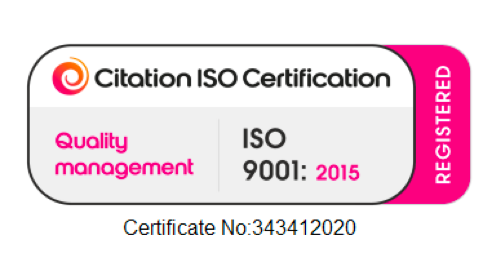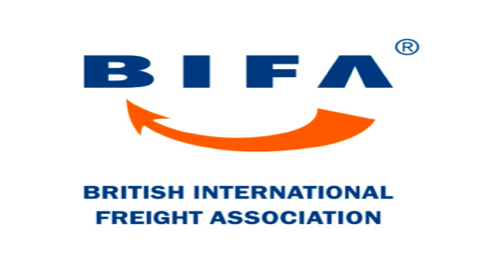In an increasingly interconnected world, international shipping by sea plays a pivotal role in global trade. Whether you're a seasoned importer or just starting your journey into the world of maritime logistics, understanding the intricacies of international shipping by sea is essential. From selecting the right shipping methods to navigating complex customs regulations, the process can often feel overwhelming. However, this comprehensive guide aims to demystify international sea transport, providing you with the insights and strategies needed to navigate the waves with confidence. Dive in to discover the key components, best practices, and expert tips that can streamline your shipping experience, ensuring that your goods travel smoothly from port to port. With the right knowledge, you can turn potential challenges into opportunities, enhancing your business’s efficiency and growth on the global stage. Join us as we embark on this voyage to mastering international shipping by sea.
Why Choose International Shipping by Sea?
International shipping by sea remains the most economical and scalable option for transporting goods over long distances. It’s ideal for heavy, bulky, or non-urgent cargo that would be too costly to move via air freight. Although ocean freight requires more time, it offers substantial cost benefits, particularly for high-volume shipments.
Additionally, ocean freight offers flexibility in terms of container options, vessel schedules, and routing. With thousands of ports across the globe, you can reach virtually any destination, making sea freight a cornerstone of international trade.
Understanding Sea Freight: FCL vs LCL
When opting for international shipping by sea, it’s crucial to carefully choose between Full Container Load (FCL) and Less than Container Load (LCL). On one hand, FCL is ideal for larger shipments that require an entire container. On the other hand, LCL offers a cost-effective solution for smaller loads that don’t need full container space. Ultimately, your decision should be based on shipment volume, budget, and delivery urgency.
FCL is best suited for businesses shipping large quantities that can fill a container. You gain exclusive use, which reduces handling and risk of damage. On the other hand, LCL allows multiple shippers to share container space, making it ideal for smaller shipments. Though slightly slower due to consolidation and deconsolidation, LCL is a cost-effective solution for smaller loads.
Choosing between the two depends on your cargo size, budget, and delivery timeline.
Key Documents for Sea Freight Shipping
To ensure a smooth international shipping by sea process, having the right documentation is non-negotiable. Consequently, even minor errors or omissions in documentation can result in significant delays and complications during customs clearance. Therefore, ensuring all paperwork is accurate and complete is essential to facilitate a smooth customs process.
The essential documents typically include:
- Bill of Lading (B/L) – A legal contract between the shipper and carrier.
- Commercial Invoice – Details the sale agreement, including information about the buyer, seller, goods, and transaction terms.
- Packing List – Details about the shipment's contents.
- Certificate of Origin – Identifies the manufacturing country of the goods for customs and trade purposes.
- Insurance Certificate – Serves as proof that the cargo is protected against potential risks during its journey.
Accurate and timely documentation is the backbone of effective international shipping operations.
The Role of Customs Clearance in Sea Freight
Customs Clearance is a vital component of international shipping by sea, as it ensures your goods meet the legal requirements for entry into a country. Whether importing or exporting, customs officials will examine your documents, assess taxes and duties, and potentially inspect your cargo.
Delays in clearance, however, can often be avoided by partnering with experienced customs brokers who fully understand local regulations. To begin with, they assist in preparing all the necessary documentation accurately. Moreover, they maintain clear communication with customs authorities and address any potential issues promptly. As a result, efficient customs clearance eliminates bottlenecks at the port and, ultimately, ensures that your goods arrive at their destination without unnecessary delays.
Packaging and Labelling for International Shipments
Proper packaging is crucial when handling international shipping by sea. The long transit times and frequent handling mean goods are at greater risk of damage without durable, weather-resistant packaging.
Labelling is equally important. International regulations often require labels to include handling instructions, destination information, and hazardous material indicators if applicable. Clear, compliant labelling helps shipping agents, customs officials, and warehouse workers identify and handle cargo correctly.
Investing in quality packaging and accurate labelling minimises risk and ensures goods arrive in top condition.
The Importance of Seafreight in Global Logistics
Seafreight remains the backbone of global logistics. It carries more than 80% of the world’s traded goods and provides unmatched capacity for bulk shipments such as oil, steel, electronics, and textiles.
It supports economies of scale, making it the preferred method for large-scale exports and imports. Freight forwarders and shipping lines offer a variety of services, from port-to-port to door-to-door deliveries. With modern technology, tracking shipments in real-time is easier than ever, enhancing transparency and reliability.
Whether you’re an SME or multinational corporation, seafreight offers scalable logistics solutions to support your business growth.
Warehousing Solutions for Sea Freight Shipments
Once your cargo arrives at the port, secure and strategic warehousing becomes critical. Temporary storage solutions allow for easier inventory management, customs clearance processing, and distribution to final destinations.
Warehousing can also offer value-added services such as:
- Palletising and repacking
- Quality control and inspection
- Labelling and barcoding
- Cross-docking for faster delivery
Having access to a reliable warehousing partner improves supply chain efficiency and helps you manage logistics costs better.
Cost Factors in International Shipping by Sea
Several variables influence the cost of international shipping by sea, and understanding them can help you manage your logistics budget more effectively.
Key cost components include:
- Freight rates are based on container type, size, and route.
- Port charges, including loading and unloading fees.
- Customs duties and taxes are levied by the importing country.
- Fuel surcharges, especially during market fluctuations.
- Generally, insurance premiums are directly influenced by the total value of the goods being transported. Thus, higher-value shipments often incur higher insurance costs to adequately cover potential risks during transit.
To get the best rates, consider consolidating shipments, booking in advance, or negotiating contracts with carriers and freight forwarders.
Best Practices for Efficient Sea Freight Operations
To streamline your international shipping by sea, follow these best practices:
- Plan early: Book shipments well in advance to avoid last-minute surcharges or capacity issues.
- Use trusted logistics partners: Reputable freight forwarders and customs brokers can simplify the process.
- Keep up to date with evolving trade laws and customs rules to avoid non-compliance.
- Ensure your cargo: Always safeguard your goods against loss, damage, or theft.
- Track and trace: Use digital tools to monitor your shipment's progress and anticipate delays.
Taking a proactive, informed approach ensures smoother operations and fewer logistical headaches.
Our Services
Customs Clearance
We provide fast and reliable customs clearance services to ensure your sea shipments enter and exit countries without delay. Our experts manage all documentation and compliance. So you don’t have to worry about penalties or hold-ups.
Seafreight
Whether FCL or LCL, our comprehensive seafreight solutions are designed to meet your business needs. We offer end-to-end logistics support, including booking, container handling, and tracking for a stress-free shipping experience.
Warehousing
Our strategically located warehouses offer secure, flexible storage options. From inventory management to distribution, we help optimise your supply chain after your shipment arrives by sea.
FAQs About International Shipping by Sea
- How long does international shipping by sea take?
Shipping time varies based on the route and destination. For example, shipments from the UK to Asia may take 25–35 days, while routes within Europe may be quicker. Transit times may also be influenced by weather disruptions and the speed of customs processing.. - Can I track my sea freight shipment in real time?
Yes. Many carriers and freight forwarders offer digital tracking services. You can monitor your shipment’s location, status, and estimated arrival time, giving you greater visibility and control. - What is the difference between freight forwarders and shipping lines?
Shipping lines own and operate vessels, while freight forwarders act as intermediaries who organise and manage the logistics process, including booking cargo space, handling documentation, and coordinating customs clearance.
Final Thoughts
Ultimately, mastering international shipping by sea is a valuable skill for businesses seeking to expand on a global scale. To begin with, understanding the logistics involved is essential. Furthermore, choosing the right shipping partners and staying well-prepared at every stage of the process can significantly reduce costs and minimise delays. As a result, you’ll be able to establish a more reliable and efficient global supply chain.
In addition, from customs clearance to warehousing and everything in between, each component contributes meaningfully to ensuring that your goods arrive safely and on time. With that in mind, the insights outlined in this guide will help you confidently manage the challenges of international sea transport. In the end, you’ll be well-positioned to chart a smoother course and achieve lasting success in the competitive world of global trade.






